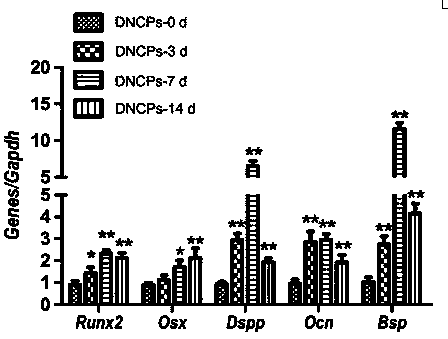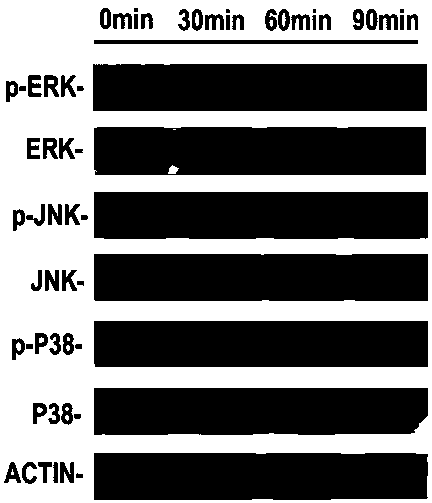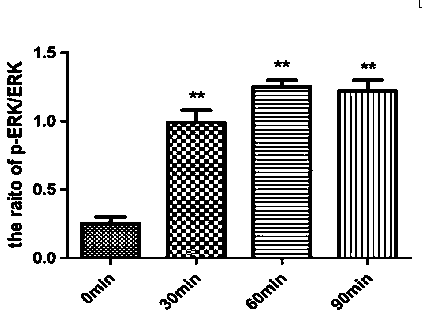Dentin non-collagen programmed preparation method
A non-collagen and dentin technology, which is applied in the programmed preparation of dentin non-collagen and the extraction of hard tissue proteins, can solve the problems of difficult experimental design and difficult quantification of natural dentin, so as to improve the scientific nature and reduce the The effect of time cost and economic cost
- Summary
- Abstract
- Description
- Claims
- Application Information
AI Technical Summary
Problems solved by technology
Method used
Image
Examples
Embodiment 1
[0040] Example 1 Preparation of dentin non-collagen
[0041] In this embodiment, the programmed preparation method of dentin non-collagen protein, the main preparation steps are as follows:
[0042] 1) Collect fresh non-carious teeth and store them in 15mmol / L sodium azide for several days after cleaning. Sodium azide is used as a preservative and a variety of enzyme inhibitors;
[0043] 2) Rinse with running water for several hours and store at -80°C for later use;
[0044] 3) Thaw teeth at room temperature, remove all soft tissues, and wash;
[0045] 4) Remove the root cementum with a dental drill or a scalpel;
[0046] 5) Cut the teeth into small pieces with a diamond bone saw or a slow cutter;
[0047] 6) Remove pulp tissue and cells;
[0048] 7) Remove the enamel with a bone knife or bone saw;
[0049] 8) Grinding the dentin sheet into a fine powder; the fine powder obtained by grinding the dentin sheet can pass through a 60-mesh sieve.
[0050] 9) After weighing, p...
Embodiment 2
[0054] Example 2 Detecting the odontogenic / osteogenic induction of the dentin non-collagen protein prepared in Example 1 on bone marrow mesenchymal stem cells of the jaw
[0055] Test method: test method: real-time quantitative PCR and protein immunoblotting detection
[0056] Test process: Add the dentin non-collagen protein prepared in Example 1 to the culture medium in an amount of 10 μg / mL to stimulate bone marrow mesenchymal stem cells for 0, 3, 7, and 14 days, extract total RNA and total protein, and reverse the total RNA Quantitative PCR detection was performed after recording, and the total protein was detected by Western blotting to determine the main indicators of bone marrow mesenchymal stem cells odontogenic / osteogenic differentiation after DNCPs induction for different time OCN / OCN, RUNX2 / RUNX2, OSX / OSX, DSPP / DSP, BSP changes. The result is as Figure 1a — Figure 1b shown.
[0057] Experimental results: The experimental results show that under the i...
Embodiment 3
[0059] Example 3 Detecting the Activation of the MAPK Signaling Pathway During the Odontogenesis / Osteogenesis Induction Effect of Dentin Non-Collagen Protein Prepared in Example 1 on Bone Marrow Mesenchymal Stem Cells
[0060] Test method: Western blot detection
[0061] Test process: Add the dentin non-collagen protein prepared in Example 1 into the culture medium in an amount of 10 μg / mL to stimulate the bone marrow mesenchymal stem cells for 0, 30, 60, and 90 minutes, extract the total protein, and perform protein immunoblotting detection. Phosphorylated P38, phosphorylated ERK, phosphorylated JNK and the total content of P38, ERK, JNK were measured, and gray value analysis was performed.
[0062] Experimental results: The experimental results showed that under the induction of DNCPs, the contents of phosphorylated P38 and phosphorylated ERK in rat long bone marrow mesenchymal stem cells were significantly increased at 30, 60, and 90 minutes, which was significantly higher ...
PUM
 Login to View More
Login to View More Abstract
Description
Claims
Application Information
 Login to View More
Login to View More - R&D
- Intellectual Property
- Life Sciences
- Materials
- Tech Scout
- Unparalleled Data Quality
- Higher Quality Content
- 60% Fewer Hallucinations
Browse by: Latest US Patents, China's latest patents, Technical Efficacy Thesaurus, Application Domain, Technology Topic, Popular Technical Reports.
© 2025 PatSnap. All rights reserved.Legal|Privacy policy|Modern Slavery Act Transparency Statement|Sitemap|About US| Contact US: help@patsnap.com



